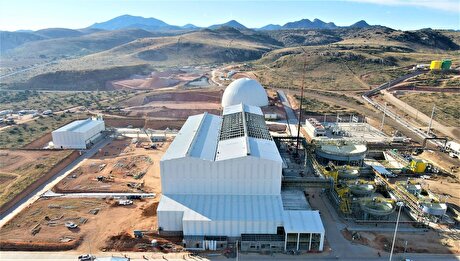
These are top-10 global mining trends expected for 2018

And companies better fasten their seat belts because those rapid changes are likely to continue and even accelerate this year, a study released by Deloitte on Wednesday says.
Phil Hopwood, Global Mining Leader at Deloitte and author of “Tracking the Trends” annual mining report, now in its 10th edition, told MINING.com that as several commodities appear to be at the onset of a bull run for the next 10 years, the sector will have to continue its transition to the digital mine of the future and anticipate future disruptors, including declining ore body grades, decreasing availability of tier one assets, and continued focus on shareholder returns.
Turning disruption into opportunity requires a long-term view capable of assessing how emerging market trends may affect the demand for specific commodities.
But turning disruption into opportunity requires a long-term view capable of assessing how emerging market trends may affect the demand for specific commodities, he says.
“Looking back just 20 years, it’d have been hard to believe that nickel, lithium, cobalt and graphite would be an affordable way to power batteries,” says Hopwood. “Today that is the reality and a potential growth opportunity, particularly with the emergence of electric vehicles.”
Asked whether the impressive gains in commodity and equity prices around the world in the lithium, cobalt and other “battery-making” metals sectors are a trend or just investment hype, Hopwood is quick to note that most new commodities result in an initial “plug”.
“There is no doubt excitement around those commodities. They are the key ingredients in batteries — and energy sources of the future – but I don’t think the hype around needing better quality nickel is 'hype' at all; it’s integral. Laterite nickel pig iron (NPI) is simply not as good as nickel sulfide for use in batteries; but of course it’s the cheaper option. The problem is, you can’t substitute for good quality nickel and expect quality results,” he says.
The same goes for lithium, Hopwood adds. “The bottom line is that what we need to focus on is the fundamentals and ask more pressing questions, like how to get the resources out of the ground effectively to meet supply.”



Trump weighs using $2 billion in CHIPS Act funding for critical minerals

Electra converts debt, launches $30M raise to jumpstart stalled cobalt refinery

Codelco cuts 2025 copper forecast after El Teniente mine collapse

Barrick’s Reko Diq in line for $410M ADB backing

Abcourt readies Sleeping Giant mill to pour first gold since 2014

SQM boosts lithium supply plans as prices flick higher

Pan American locks in $2.1B takeover of MAG Silver

Nevada army depot to serve as base for first US strategic minerals stockpile

Viridis unveils 200Mt initial reserve for Brazil rare earth project

Kyrgyzstan kicks off underground gold mining at Kumtor

Kyrgyzstan kicks off underground gold mining at Kumtor

KoBold Metals granted lithium exploration rights in Congo

Freeport Indonesia to wrap up Gresik plant repairs by early September

Energy Fuels soars on Vulcan Elements partnership

Northern Dynasty sticks to proposal in battle to lift Pebble mine veto

Giustra-backed mining firm teams up with informal miners in Colombia

Critical Metals signs agreement to supply rare earth to US government-funded facility

China extends rare earth controls to imported material

Galan Lithium proceeds with $13M financing for Argentina project

Kyrgyzstan kicks off underground gold mining at Kumtor

Freeport Indonesia to wrap up Gresik plant repairs by early September

Energy Fuels soars on Vulcan Elements partnership

Northern Dynasty sticks to proposal in battle to lift Pebble mine veto

Giustra-backed mining firm teams up with informal miners in Colombia

Critical Metals signs agreement to supply rare earth to US government-funded facility

China extends rare earth controls to imported material

Galan Lithium proceeds with $13M financing for Argentina project

Silver price touches $39 as market weighs rate cut outlook


















